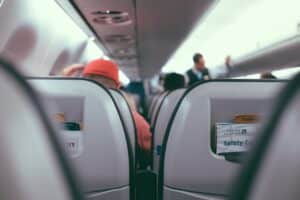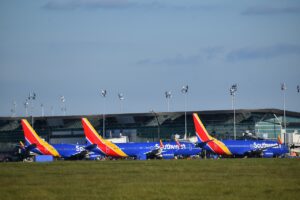Southwest Switches Seats
Game-Changer Alert: Southwest Airlines is saying goodbye to open seating and hello to spacious legroom seats starting next year! The Texas-based carrier, known for its unique open seating model for over 50 years, announced Thursday that it will now assign seats and introduce premium seating options on all flights. This is the boldest move in Southwest’s journey, driven by the quest for higher revenue and a sharper economic edge.
 Southwest built its reputation on having a single economy-class cabin with open seating. Passengers are given a boarding group, but once they’re onboard, they can choose any available seat. Their current boarding system, with its boarding groups and numbers, often feels like a race for the best seats. Plus, research shows that 80% of customers prefer having assigned seats and nearly 90% of potential customers prefer having an assigned seat. By moving to an assigned seating model, Southwest expects to broaden its appeal and attract more flying from its current and future customers.
Southwest built its reputation on having a single economy-class cabin with open seating. Passengers are given a boarding group, but once they’re onboard, they can choose any available seat. Their current boarding system, with its boarding groups and numbers, often feels like a race for the best seats. Plus, research shows that 80% of customers prefer having assigned seats and nearly 90% of potential customers prefer having an assigned seat. By moving to an assigned seating model, Southwest expects to broaden its appeal and attract more flying from its current and future customers.
The recently announced modifications will enable the carrier to increase profits by offering premium seats at a higher rate on all its flights. Starting soon, about a third of the seats on Southwest’s Boeing 737s will feature extended legroom—pending FAA approval. This move marks a significant shift from Southwest’s traditional, straightforward model, reflecting a keen response to changing customer desires and market trends. While Southwest has often been praised for its simplicity, this upgrade addresses critiques about its slower pace in adapting, especially as competitors have long been ahead with diverse seating options. This aligns with the offerings of other airlines on narrow-body aircraft.
Kicking off in February 2025, Southwest is adding overnight flights to the portfolio. Adding redeye flights will give customers more flexible travel options and help the airline stay valuable in a growing market.
The company rolled out these major adjustments as it shared its second-quarter results, which showed a net income of $367 million and record operating revenues of $7.4 billion. This marks a dramatic turnaround from the previous quarter when Southwest reported a $231 million loss. Despite holding $11 billion in liquid assets, the airline faces $8 billion in debt and ongoing challenges with its long-time partner, Boeing.
Southwest reports record passenger numbers but faces a challenge with its fleet. Due to delays in Boeing deliveries, the airline will retire more aging aircraft than it can replace this year, causing its fleet to shrink from 817 planes at the end of the second quarter to approximately 802 by the end of 2024.
CEO Bob Jordan explained that while the open seating model has been a cornerstone of Southwest, thorough research confirmed that switching to assigned seating and offering extra legroom is the best move for everyone involved. Southwest said these shifts won’t “compromise the airline’s operational efficiency.” Don’t worry, the beloved policy of two free checked bags isn’t going anywhere!
This makeover comes amid pressure from Elliott Investment Management, which recently acquired a nearly $2 billion stake in Southwest and has been calling for leadership reorganization. However, Jordan clarified that the new seating plans were already in progress before Elliott’s involvement and remains committed to moving forward with the current management.
More details will be given at an investor day in September. This pivotal change signals a new chapter for Southwest, as they truly embrace their “Switch Seats” strategy to enhance customer satisfaction and stay ahead in the competitive airline industry.
Contact our leadership team, Jim Wright Sr. Vice President, Corporate Sales today to discover how we can elevate your business travel experience.

